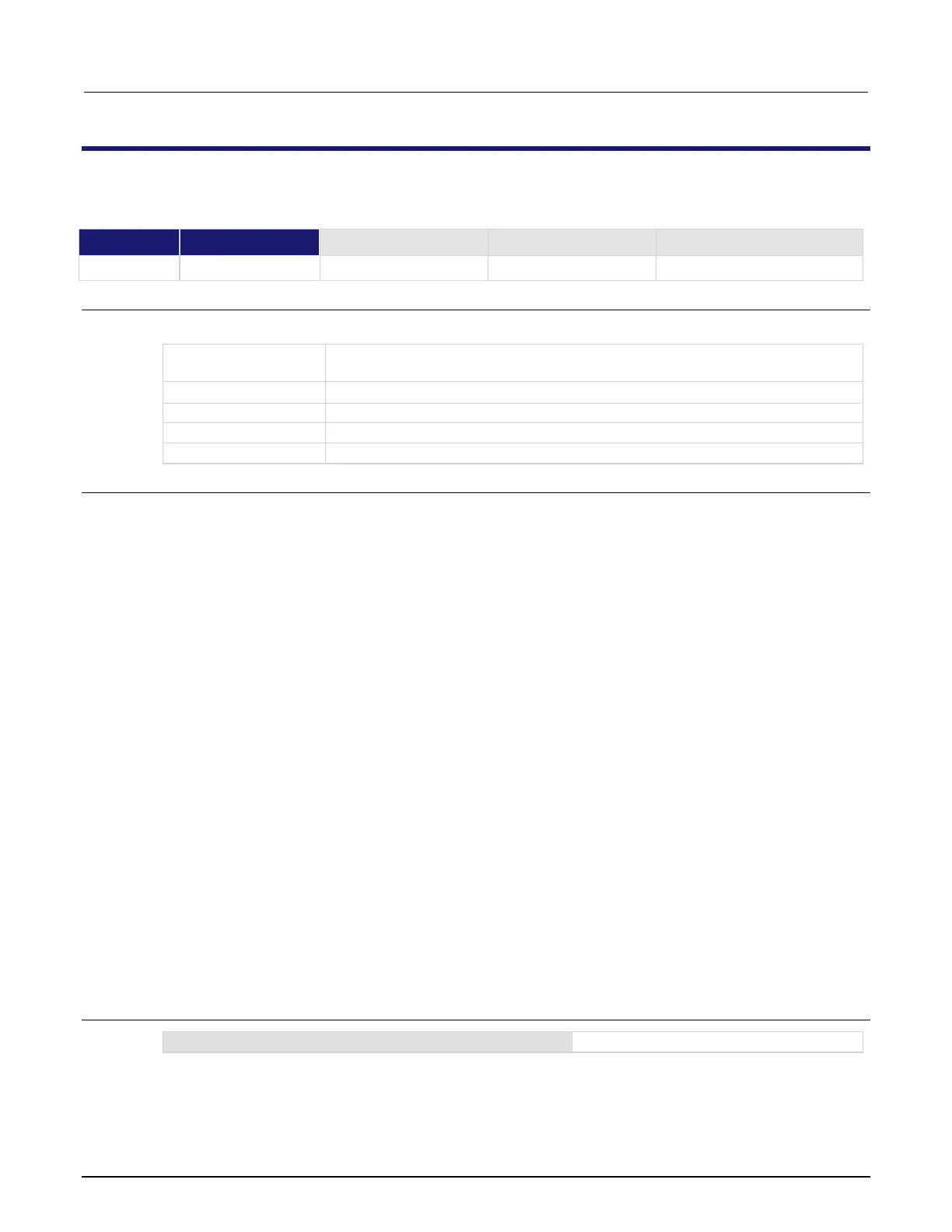Details
This function configures the source action to be a linear source sweep in a subsequent sweep. During
the sweep, the source generates a uniform series of ascending or descending voltage or current
changes called steps. The number of source steps is one less than the number of sourced points.
The points parameter does not set the number of steps in a sweep. Instead, it is used to calculate
source values within a subsequent sweep. If the subsequent sweep has more points than specified in
points, the source restarts at the beginning. This means that if the trigger count is greater than the
number of points in a sweep as configured, the SMU satisfies the trigger count by restarting the
sweep values from the beginning.
If the subsequent sweep has fewer points than specified in points, endValue is not reached during
the sweep. This means that if the trigger count is less than the number of source values configured,
the SMU satisfies the trigger count and ignores the remaining source values.
In cases where the first sweep point is a nonzero value, it may be necessary to pre-charge the circuit
so that the sweep returns a stable value for the first measured point without penalizing remaining
points in the sweep.
With linear sweeps, it is acceptable to maintain a fixed source resolution over the entire sweep. To
prevent source range changes during the sweep (especially when sweeping through 0.0), set the
source range to a fixed range appropriate for the larger of either startValue or endValue.
The SMU only stores the most recent configured source action. The last call to
smuX.trigger.source.linearY(), smuX.trigger.source.listY(), or
smuX.trigger.source.logY() is used for the source action.
Source functions cannot be changed within a sweep.
After configuring the sweep source values, enable the source action by setting
smuX.trigger.source.action.
Example

